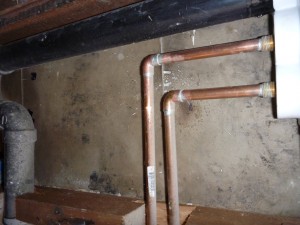Do I Have a Mold Problem?

Four signs that you have a mold problem:
M
oisture – Moisture can be caused by a number of different factors including condensation from HVAC systems, persistent humidity, plumbing failures, flooding, or a number of other sources.
If you see moisture, chances are you already have a mold problem.
O
dor – Ever noticed a musty smell that just won’t go away no matter how much you clean? Sometimes molds are hidden and cannot be seen. A musty or earthy smell often indicates that mold is hiding, but a smell may not be present for all molds.
L
eaking – This goes hand-in-hand with moisture. A leaky roof or pipe in your home is a sure source of food for mold. If you see leaking water, fix it fast! It is important to dry water damaged areas and items within 24-48 hours to prevent mold growth.
D
iscoloration – The only sure sign that you have mold is if there is visible growth. Mold comes in all colors and textures, so if you notice a change in color on drywall, studs, carpet, concrete, or other building materials, you almost certainly have a mold infestation.
If you’ve identified any of these symptoms, it’s time to determine how much mold is growing:
Small Areas – Mold is considered to cover a “small area” if the patch is no larger than ten square feet.
Moderate Areas — The mold area is considered “moderate” if there are more than three patches, each patch smaller than ten square feet, or there is one or more isolated patches larger than 10 square feet but smaller than 32 square feet (size of a 4 x 8 foot sheet of plywood or drywall). Assessment by a professional is recommended.
Extensive Areas — A mold area is considered “extensive” if a single patch of mold is larger in area than a sheet of plywood (32 square feet). Being exposed to this much mold is not a good idea. Do not attempt to clean up large areas of mold yourself. You need professional help to determine why the mold is there in the first place and how to clean it up.
When should you seek professional help?
You may need professional help when:
• There is a lot of mold
• The home is very damp and moist
• Mold comes back after repeated cleaning
• A family member suffers from asthma or respiratory problems or other health problems that appear to be aggravated inside the home
by deborah on 24. May, 2011
